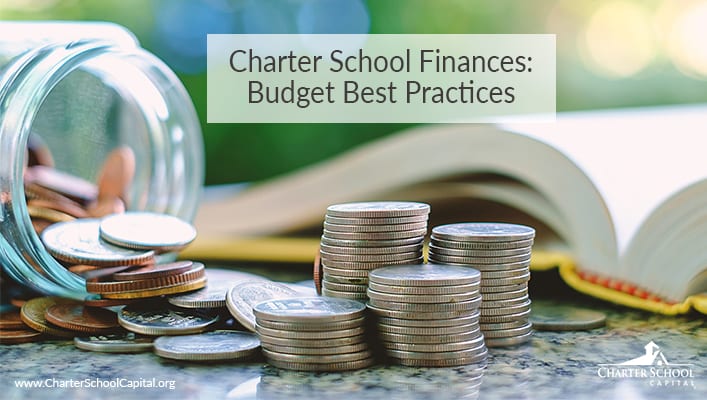Charter School Finances: Budget Best Practices
Since the opening of Charter School Capital 10 years ago, we’ve reviewed thousands of charter school budgets. Year after year, we see common mistakes many charter schools make when budgeting for their academic year. So, we’re sharing some budgeting best practices to help you have a financially successful academic year—whether your school is growing student enrollment, expanding facilities, or implementing new educational programs. Don’t just survive – thrive!
Start Up School
- Start with a petition budget
- Pay close attention to your budget and then map out your priorities for the year
- Have a plan and show all costs (in each stakeholder’s area) frame the proposed budget
- Build a budget that includes everything on your wishlist, then prioritize (with all stakeholders)
- Plan for surprises by having a budget surplus to cover unexpected costs
- Lay the foundation for your annual budget, but plan for regular updates
Growth / Mature School
-
- Start with a baseline budget, based on previous year
- Pay attention to how enrollment projections directly affect revenue
- Actively manage your cashflow: financing, receivables, payables, etc.
- Understand your accounts payable and vendor relationships
- Strategically partner with external service providers and keep them in the loop
Tip: Creating a wholistic and realistic view on what’s affordable (and what’s not) helps all stakeholders get on the same page, building a solid frame of reference for future budgets.
Cash Flow Planning
- Which attendance metric drives your revenue?
- What revenue is monthly, quarterly, or more variable?
- What happened in prior years with regards to timing of payments?
- Which costs are fixed monthly and which vary?
- Communicate with your vendors to plan your accounts payable according to your budget ebbs and flows
- Financing: Note timing of inflow from your financer and outflow timing for payments (balloon payments, etc.)
- Receivables: Map out timing of state payments and how that timing affects your cashflow
Revenue Factors to Consider
- Free and reduced price lunch: Correlate to your fundraising needs
- Track and understand your fundraising families and need for per-student fundraising goals
- Restricted grants: How were they intended to be spent and what programs are reliant on them?
- Have a plan for the sustainability of institutional fundraising and the programs it supports
Spending Trends to Be Mindful of
- Salary scale changes: Your area’s unemployment rate, demand for teachers, increasing salaries
- Retirement benefits: Compare offering a defined contribution plan to a defined benefit plan
- Textbooks and technology: Do you need to renew or change your school’s to stay current?
- Be mindful of facility cost increases (interest rates, exemption laws, etc.) Plan how to fund updates
Budget Safeguards
- Review salary scale changes with the future in mind
- Consider non-financial perks for your employees: recognition, flexibility, career paths and professional opportunities, etc.
- Have an equipment/technology plan to budget for upgrading or replacing your technology infrastructure
- Plan new any construction needs, identify your maximum enrollment, and set a facilities reserve fund
- Set target fund balance and target cash balance
- Have an annual Board of Directors discussion on your school’s long-term initiatives, with a focus on your mission
Click here to download this resource in PDF format.
Over the past decade, we’ve reviewed thousands of charter school budgets and helped guide countless schools through their charter school financing processes. Year after year, we see many charter schools make the same mistakes when budgeting for the academic year. To help you achieve your goals, we’ve put together this informative and thorough guide to share best practices and call out common pitfalls to avoid.
It covers:
• Planning for long-term financial health
• Implementing best practices for achieving buy-in and setting internal controls
• Understanding key financial metrics to watch
• Utilizing tips on cashflow planning and more!
Download it now and get the tools to be more strategic about your budgeting practices!
